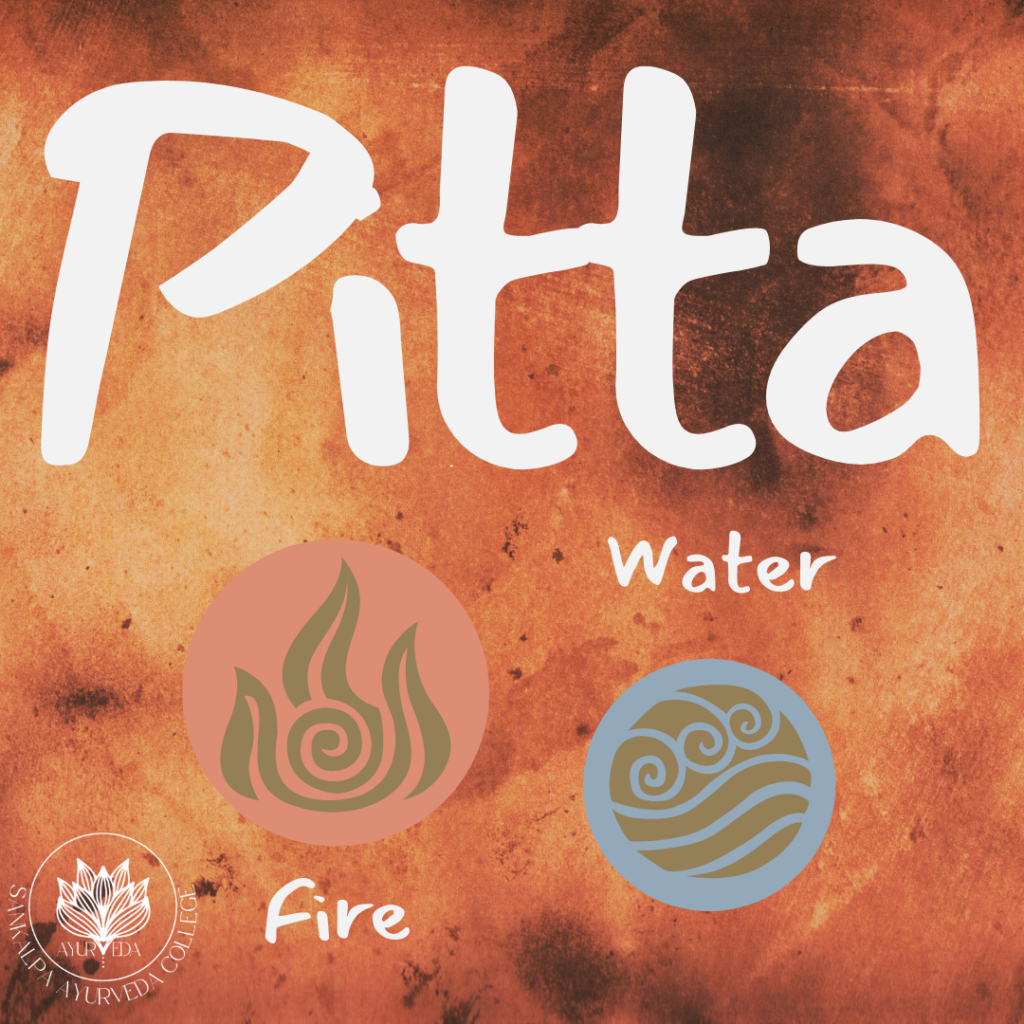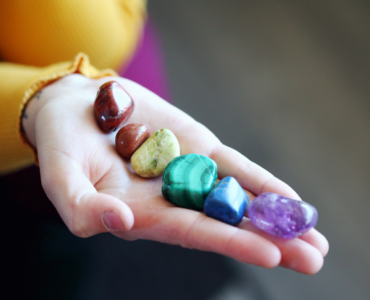Introduction: My Pitta-Kapha Path


As someone with a Pitta-Kapha constitution, my body and mind have always felt like a mix of fire and earth. I’ve had the mental clarity, drive, and intensity of Pitta—but also the heaviness, sluggish digestion, and emotional steadiness of Kapha. Over the years, this duality brought both strengths and struggles.
For a long time, I didn’t understand my constitution and I didn’t why I was so prone to inflammation, hormonal issues like PCOS and endometriosis, and thyroid imbalances. Despite eating well and exercising, I faced digestive challenges in childhood and endocrine issues much later on in life that manifested in disease. It wasn’t until I began studying Ayurveda in depth—and recognized my unique constitution as Pitta-Kapha—that things began to shift and heal.
In this article, I’ll take you on a journey through the classical Ayurvedic understanding of the Pitta-Kapha constitution, with insights from the Caraka Samhita, Ashtanga Hridaya, and modern clinical wisdom. You’ll also find practical tips and a sample daily routine that helped me regain hormonal balance and reduce systemic inflammation.
What is Pitta-Kapha constitution?
In Ayurveda, each individual is born with a unique prakriti, or constitution, made up of the three doshas: Vata (air/ether), Pitta (fire/water), and Kapha (water/earth).
When two doshas dominate at birth, this is called dvandvaja prakriti (dual-dosha type). According to the Caraka Samhita (Sutrasthana 7), dual constitutions like Pitta-Kapha are more common than single-dosha types and are characterized by a blend of both dosha qualities.
“Among these, persons with single-dosha prakriti are rare, while those with two or three doshas are more common.”
— Caraka Samhita, Sutrasthana 7.39
Decoding Pitta and Kapha: Qualities & Interaction
Pitta Dosha Qualities
- Hot (ushna)
- Sharp (tikshna)
- Light (laghu)
- Slightly oily (sasneha)
- Spreading (sara)
- Liquid (drava)
Kapha Dosha Qualities
- Heavy (guru)
- Cold (shita)
- Oily (snigdha)
- Smooth (shlakshna)
- Slow (manda)
- Stable (sthira)
When these doshas coexist, their opposing qualities can create internal friction. For example:
- Pitta’s heat may ignite inflammation, while Kapha’s sluggishness may prevent detox.
- Kapha may slow digestion, while Pitta may increase acidity and irritation.
- Emotionally, Pitta’s irritability may clash with Kapha’s emotional inertia.
Traits of a Pitta-Kapha individual
Physical characteristics
- Medium to stocky build
- Soft, warm, sometimes oily skin
- Strong digestion with tendency for heaviness
- Prone to weight gain, water retention, or lymphatic stagnation
- Sweats easily; may develop acne, rashes, or skin inflammation
Mental and emotional tendencies
- Intelligent, goal-oriented, and disciplined (Pitta)
- Loyal, steady, nurturing, and compassionate (Kapha)
- May struggle with internalized anger or emotional suppression
- Prone to burnout when Pitta is high and emotional stagnation when Kapha dominates
Common health imbalances in Pitta-Kapha types
According to classical and clinical Ayurvedic literature, Pitta-Kapha individuals are more prone to:
- Hormonal imbalance (PCOS, estrogen dominance)
- Inflammatory conditions (acne, gastritis, endometriosis)
- Sluggish metabolism, weight gain
- Thyroid issues (especially hypothyroidism with inflammation)
- Emotional suppression, resentment, or mood swings
- Water retention, lymphatic congestion
According to Charaka Samhita:
- Digestive Disorders : Pitta’s heat can lead to conditions like hyperacidity, gastritis, and ulcers, while Kapha’s heaviness can cause sluggish digestion and indigestion.
- Skin Conditions : Pitta’s inflammatory nature can result in skin issues such as acne, rashes, and eczema, while Kapha can contribute to oily skin and clogged pores.
- Respiratory Issues : Kapha’s mucus production can lead to respiratory conditions like asthma, bronchitis, and sinusitis, especially when combined with Pitta’s inflammation.
- Metabolic Disorders : The combination of Pitta’s metabolic activity and Kapha’s stability can lead to conditions like obesity and diabetes.
According to Modern Clinical Ayurveda:
- Inflammatory Conditions : Pitta’s heat and Kapha’s stagnation can contribute to inflammatory diseases, including arthritis and other joint issues.
- Cardiovascular Issues : The combination of Pitta’s intensity and Kapha’s heaviness can lead to hypertension and other cardiovascular problems.
- Hormonal Imbalances : Conditions like PCOS may arise due to Kapha’s influence on weight and metabolism, along with Pitta’s impact on inflammation and hormonal activity.
- Emotional Imbalances : Pitta’s intensity can lead to irritability and anger, while Kapha’s stability can sometimes result in lethargy or depression.
Carakap warns that in dual constitutions:
“When one dosha increases, it may provoke the other, leading to complex diseases.”
— Caraka Samhita, Sutrasthana 7.42
Classical insights: Caraka, Vagbhata & the Tridosha Lens
Caraka Samhita
Caraka categorizes Pitta-Kapha constitution as “madhyama” (average)—not ideal, but strong when balanced. He emphasizes that external factors like diet, season, emotions, and lifestyle can easily disturb the dual dosha balance.
Ashtanga Hridaya (Vagbhata)
Vagbhata describes the inherent qualities of doshas in detail, noting that their opposing traits can coexist in the same person. He emphasizes the importance of rutu charya (seasonal routine) and ahara (diet) in maintaining balance.
My Healing Journey with Pitta-Kapha
For years, I tried “healthy” diets that worsened my Pitta (too many raw greens, spicy foods, vinegar-based dressings). Or I leaned into Kapha-pacifying routines that left me depleted and dry. Once I embraced my need for warmth, lightness, calm, and structured stimulation, everything shifted.
Here’s what helped me:
- Switched from HIIT to grounding yoga and brisk walking, mediation and pranayama
- Focused on warm, lightly spiced, mostly cooked meals
- Eliminated dairy, excess gluten, and refined sugar
- Practiced daily abhyanga (oil massage) with cooling oils like coconut or sunflower
- Supported my thyroid and hormones with herbs (under guidance)
Lifestyle recommendations for Pitta-Kapha balance
Daily routine (Dinacharya)
| Time | Routine Element | Goal |
|---|---|---|
| 6:00–6:30 AM | Wake before sunrise (Kapha time) | Prevent heaviness, inertia |
| 7:00 AM | Gentle yoga, brisk walk or dry brushing | Activate circulation |
| 8:00 AM | Warm breakfast (steamed fruit, porridge, cumin tea) | Support digestion |
| 12:00 PM | Hearty lunch with steamed vegetables + mild spices | Pitta’s prime digestion time |
| 4:00 PM | Herbal tea (fennel, mint) + light snack | Stabilize blood sugar |
| 6:30–7:00 PM | Early, light dinner (soups, cooked greens) | Ease digestion before sleep |
| 9:00 PM | Oil massage, journaling, breathwork | Wind down, cool the mind |
Diet tips
- Emphasize: light, warm, mildly spiced, bitter and astringent foods
- Avoid: heavy dairy, fried foods, fermented items, vinegar, red meat
- Use herbs like coriander, cumin, fennel, turmeric, and mint
- Avoid excessive chili, sour, salty, and oily dishes
- Stay hydrated, but avoid overdrinking cold water
Seasonal adjustments
- Spring (Kapha season): favor dry, light meals and increased movement
- Summer (Pitta season): favor cooling foods, avoid overstimulation
- Early autumn: ideal for mild detox or Panchakarma
Final thoughts: embracing duality in healing
Being Pitta-Kapha isn’t a problem—it’s a powerful combination of focus, strength, and compassion. But without awareness, it can turn into a battlefield of internal heat and stagnation. Ayurveda taught me how to flow with my constitution, not fight it.
If you too struggle with inflammation, hormonal imbalance, or emotional burnout, know this: your prakriti holds the key. Honor it. Learn its rhythms. You don’t need to “fix” yourself—just align with who you already are.
Ready to Start Your Pitta-Kapha Journey?
If you’d like help creating your own daily routine, food guide, or seasonal wellness plan based on your Pitta-Kapha constitution, feel free to reach out—or keep exploring the wisdom of Ayurveda in your own rhythm. Healing happens when we listen.





